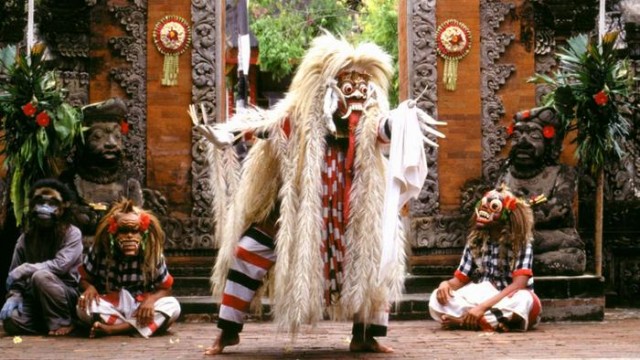Oral Tradition
Every society passes information about its history, myths, and customs along to new generations. In many African societies such material has been transmitted orally, through the spoken word. This method of passing along literature and history is oral tradition. African oral tradition involves both the material that is spoken—the oral art—and the setting in which it is spoken. Although very old, oral tradition remains alive and meaningful for many Africans. Performers and audiences have adapted oral tradition, adding new content and making use of new communications tools.

Oral Art and Its Uses
Among the many varieties of oral art are songs, chanted recitations, poems, and PROVERBS AND RIDDLES. Dramas, epics, and other stories about the real or imaginary past are also important. Oral art is more than simply telling or repeating something—it is a carefully crafted performance. Artists use a variety of stylistic devices to highlight certain aspects of the stories they tell and the songs they sing. These stylistic devices are also memory aids. One device of this sort is the repetition of key phrases or sentences, such as a hero's features or virtues. Another is onomatopoeia, the use of words that sound like what they represent, such as the noises made by animals or by the wind.
Songs and dramas may be accompanied by musical instruments. The music is more than a background and can add to the meaning of the spoken text. For example, a performer reciting the epic of SUNDJATA, a legendary medieval warrior king of the Mali Empire, might play a harp. At key points in the story the performer may suddenly change rhythm and play a pattern associated with Sundjata. This honors the hero and flatters those people in the audience who consider themselves his descendants.
Skilled oral artists appeal to the audience's eyes as well as its ears, using body movements, gestures, and objects to illustrate or emphasize important points in the story. Performers also incorporate DANCE to add visual and dramatic impact to their recitals.
Oral art forms serve many purposes. Performances can amuse or educate an audience, either at formal gatherings, such as official celebrations, or at informal gatherings of family and friends. Some take place during religious ceremonies. Songs and recitations are often used to increase the reputation of particular individuals or groups.
Performers and Patrons
Men and women with extraordinary memories and public-speaking talents are well suited to become oral artists. Their skills earn them great respect, especially if they also possess musical abilities. While many are known only within their local communities, a few individuals acquire far-reaching fame as artists.
Some societies do not regard oral artistry as a distinct profession, and artists in these communities do not earn a living by performing. In other groups, however, oral artists are recognized as professionals who specialize in communication. Whether or not they are members of a professional group, oral artists need a long period of training. They must memorize vast amounts of material, learn to use appropriate performance techniques, and perhaps practice playing an instrument. A young artist may learn these skills from a recognized master, working for the master in return.
In the past, many oral historians and artists were supported by royal, noble, or wealthy patrons. In exchange for food, housing, and protection, the artists defended their patrons' interests and promoted their honor and fame. At important public events in the royal court of RWANDA, oral performers would praise their patron families' legendary pasts or current achievements. Retelling a ruling family's history in public could help a king maintain his leadership. Griots, as storytellers are called in the SAHEL of western Africa, performed this function in the royal courts of the SUDANIC EMPIRES OF WESTERN AFRICA. Among the XHOSA and ZULU of southern Africa, a performer called an imbongi specialized in glorifying the ruler.
Some oral artists still perform on behalf of families or individuals. However, social and political changes have altered the old relationships, and artists can no longer count on support from patrons. Print publications, radio, television, and other media now compete with storytellers as shapers of public opinion. Yet oral artists can change with the times. In the cities of GUINEA, SENEGAL, GAMBIA, and MALI, some griots now broadcast their songs on television and radio. Cassette tapes of their performances reach even remote rural areas. By blending new technology with ancient oral tradition, some of these artists have gained an international reputation. (See also Literature, Music and Song, Mythology, Popular Culture, Writing Systems.)